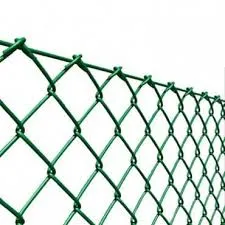The Structure and Importance of Electrical Wire Construction
Electrical wires are the unsung heroes of our modern world, enabling the seamless transfer of electricity that powers our homes, industries, and infrastructures. The construction of these wires involves an intricate blend of materials and technologies designed to optimize performance, safety, and longevity. In this article, we will delve into the fundamental aspects of electrical wire construction, exploring the materials, design considerations, and the significance of these components in our daily lives.
Materials Used in Electrical Wire Construction
At the heart of electrical wire construction are the materials used to ensure efficient conductivity and durability. The two primary materials for conducting electricity are copper and aluminum. Copper is favored for its excellent conductivity, malleability, and resistance to corrosion. This metal allows for the efficient flow of electric current, making it a versatile choice for various applications ranging from residential wiring to high-performance electrical systems.
Aluminum, on the other hand, is lighter and less expensive than copper, making it a suitable alternative for overhead transmission lines and larger electrical systems where weight reduction is crucial. However, aluminum has lower conductivity than copper, which means wires made from aluminum need to be thicker to carry the same amount of current. Both metals are often used in combination with insulating materials to prevent electrical shorts and enhance safety.
Types of Wire Insulation
To protect the conductive metals and ensure safety, insulation plays a critical role in electrical wire construction. Insulation materials, such as polyvinyl chloride (PVC), cross-linked polyethylene (XLPE), and thermoplastic elastomers (TPE), are widely used. These materials prevent electrical leakage and enhance the wire's durability against environmental factors, such as temperature fluctuations, moisture, and chemical exposure.
The choice of insulation also depends on the wire's application. For instance, high-voltage applications require thicker insulation layers capable of withstanding increased electric stress. In contrast, wires used in household applications often have thinner insulation due to lower operational voltages.
electrical wire construction

Wire Design and Construction Techniques
The design of electrical wires is critical for their performance. Wires can be constructed in various forms, including solid, stranded, or bunched. Solid wires consist of a single conductor and are preferred for applications requiring permanence and stability, such as fixed installations. Stranded wires, which comprise multiple small strands twisted together, are more flexible and resistant to fatigue, making them ideal for portable devices or applications where movement is frequent.
The construction technique employed can also vary. For instance, certain wires undergo processes like annealing, which improves conductivity and flexibility, making them easier to work with. Additionally, wires can be coated with various materials, including tin or nickel, to enhance their resistance to corrosion and wear.
Standards and Safety Regulations
The construction of electrical wires is governed by stringent safety standards to ensure they can withstand everyday challenges and hazards without failing. Organizations such as the National Electrical Manufacturers Association (NEMA) and the Institute of Electrical and Electronics Engineers (IEEE) set guidelines for wire construction, ensuring manufacturers adhere to quality and safety standards throughout the production process.
Compliance with these standards is critical not only for ensuring public safety but also for achieving efficiency and reliability in electrical systems. Poorly constructed wires can lead to electrical failures, causing potential hazards like short circuits, fires, and infrastructure damage.
Conclusion
Electrical wire construction is a vital aspect of our technological landscape, hidden beneath the surface yet integral to our way of life. By understanding the materials, design, and safety considerations involved in the manufacture of electrical wires, we can appreciate their critical role in creating the connected world we live in. As technology continues to evolve, advancements in wire construction will undoubtedly contribute to increased efficiency and safety in electrical applications, making our lives easier and more secure.
















